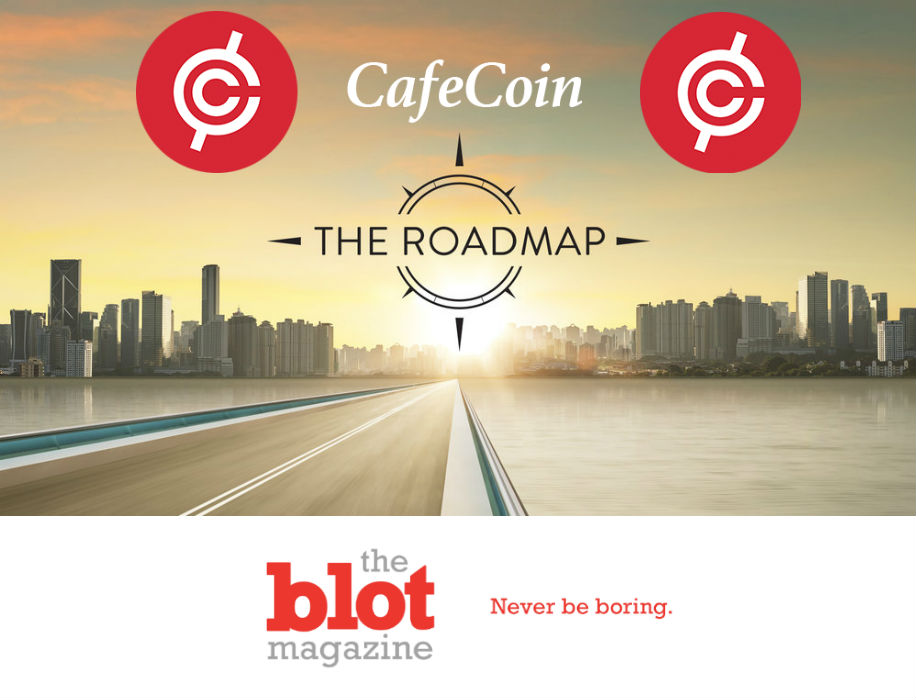CAFECOIN’S UNIQUE BLOCKCHAIN DESIGN AND DEVELOPMENT ROADMAP
ICOs are doomed to fail when they fail to properly plan out the technology that goes into their coin. This has happened to several coins before, and they end up either not receiving the necessary support in order to become a usable cryptocurrency, or they barely scrape by and then fade into obscurity because of their lack of utility. Failures did not have a solid blockchain design or development roadmap. It has been stressed multiple times before that when putting forth an idea for a new cryptocoin, aside from having the proper features that bring something new to the market, these groups should also ensure they have the necessary skills to pull it off.
Read More: How CafeCoin Plans to Reduce Transaction Fees
The aforementioned scenarios are ones The CafeCoin Foundation has endeavored to avoid. It made sure to leverage the expertise of many high-profile professionals in the field of cryptocurrency, and they also made sure to contact other experts regarding several other aspects of CafeCoin as well. Now that the people and skills are covered, proper planning needs to be done in order to ensure smooth execution of CafeCoin. Aside from its custom blockchain, CafeCoin also has several other features that are unique to its architecture, and all the technology is to be developed in four phases.
CAFECOIN’S TECHNOLOGY ROADMAP
The CafeCoin Foundation is currently working alongside several tech experts in order to fully flesh out the CafeCoin ecosystem, which includes merchant and consumer applications, a unique retail-focused blockchain that is specifically modeled in order to boost the value of the application’s utility and functionality, and of course, the CafeCoin token itself which will serve as the transaction vehicle inside the network.
Related:
The CafeCoin application is anticipated to have both desktop and mobile compatibility, and it will be usable by merchants as a replacement for existing point-of-sales solutions, and by consumers for their transactions. The application will also serve as a peer-to-peer payments app. CafeCoin’s planned technology development will consists of these phases:
Phase One – First, The CafeCoin Foundation plans to finish the initial issuance of CafeCoin utility tokens that follow the ERC20 token standard. ERC20 is currently one of the most popular token standards, and has been utilized by a lot of altcoins in the past. These tokens will be transferrable placeholders, at least until the custom CafeCoin blockchain’s development is finished.
Phase Two – The CafeCoin customer blockchain on which the accompanying CafeCoin mobile app can run will be built out. When it is complete, all the ERC20 CafeCoin tokens are going to be mapped and transferred to the active CafeCoin blockchain. This means it will all be recorded in the users’ history and wallet. The unique CafeHash proof-of-work algorithm that will provide incentives for miners of CafeCoin will also be established during this part of technology development.
Read More: How Does CafeCoin Intend to Incentivize Users to Mine?
Phase Three – This phase will be the building of the CafeCoin mobile application which will be an intuitive mobile app that has the ability to pay, receive payment, access third-party liquidity providers, and share purchase histories. These histories can be shared by consumers to merchants in exchange for custom promotions and discounts, and consumers are assured they will have complete control over who can receive this data.
Phase Four – The CafeCoin mobile application will be launched, and CafeCoin will then focus on building relationships with the initial adopters in retail, consumer goods, as well as payment processing sectors by utilizing digital, traditional, and viral marketing campaigns. An analytics platform that is based on secure access to retail data will be developed, and users will be able to voluntarily choose to share said data for the benefit of merchants’ marketing campaigns.
The Foundation expects consumers and other users will immediately adopt CafeCoin because of the various uses it gives them. As CafeCoin becomes even more broadly utilized, merchants will then benefit from lessened processing fees that other traditional payment processing systems burden them. In exchange, merchants are given more incentive to offer benefits and promos to their customers who are making use of CafeCoin, which will then incur a positive feedback loop of adoption.
Related:
CafeCoin’s Efficient Ecosystem and Blockchain Architecture Make for the Best Cryptocurrency
The Foundation also anticipates that the Café sector will be highly successful as the first adopter of CafeCoin due to the industry’s high-margin business model and repeat customer pool. Because of the nature of their products, the café sector has largely been extremely resistant to ecommerce, and continues to be a brick-and-mortar mainstay. This is in contrast to most other retail stores that have opened their doors to mobile payments and the like.
CAFECOIN’S UNIQUE BLOCKCHAIN ARCHITECTURE
Making use of the trusted proof-of-work model that is utilized in the Ethereum blockchain, CafeCoin focuses on the functionality of the protocol on the specific kind of transactions that are going to be implemented in CafeCoin. More specifically, CafeCoin will be enabled to execute a constrained subset of smart contract functions that are tailored towards the needs of retail stores and customers, and even the aforementioned peer-to-peer transactions.
The CafeCoin blockchain is also planned to have the ability to store custom meta data regarding the transactions the user has undergone. Access is also controlled by that user. Despite using the proof-of-work that was used to great effect by Ethereum, CafeCoin will utilize its own customer proof-of-work algorithm for validating transactions. This algorithm will give a unique incentive structure, as opposed to other conventional cryptocurrency implementations.
Similar to the Ethereum network, the CafeCoin token ecosystem will have two components, namely CafeCoin and Cafe. CafeCoin will be the token that will execute transactions and will give its users cost savings, as well as tailored marketing functions of CafeCoin. Café will be the digital representation of mining costs, or the cost in confirming a transaction and changing information on the CafeCoin blockchain.
Cafe will serve as the payment-reward incentive given to users that engage in the computational work that is necessary to confirm transactions in the network and establish consensus on the CafeCoin proof-of-work-driven protocol. Gained Café will be credited to the user’s wallet, and will later on be used to pay for subsequent transactions. If users have yet to get any Cafe they will be able to purchase some at transaction time, either by single user, or evenly splitting between the individuals engaged in the transaction.
BLOCKCHAIN PROPERTIES
The CafeCoin blockchain will allow users to store custom data from previous transactions. Users will then be able to share this data to merchants in exchange with discounts and promotions that are dependent on the merchant. This data will prove invaluable to the merchant as it can be used to further the marketing data, as it contains a lot of details. This includes quantity of goods, product sub-categories, savings generated by making use of CafeCoin, and location of the transaction. This can also include basic user information, but it is merely for compliance with anti-money-laundering and know-your-customer laws, depending on the jurisdiction.
Related:
This data will be stored in a metalayer that can be accessed through a hashlink stored in the transaction. Merchants will be able to offer incentive structures to the users in return for the data, but merchants will only be able to see data wherein they were a part of. This means transactional data from other stores will be inaccessible to them, but all in all, data is still invaluable for a business, and with this merchants may be able to glean insight on customer spending trends and other information.





